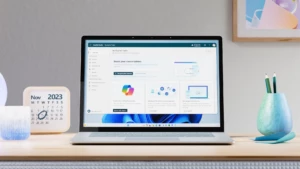
Stay in the flow of work with new collaborative apps for Microsoft Teams
In the past 20 months, we’ve witnessed an explosive growth of virtual interactions, with people collaborating more—both inside and outside their organizations, with greater frequency and across more applications than ever before.
The question facing us now is, how can we shift from merely adapting to thriving with hybrid work?
We believe that the answer lies in the ability to bring people, processes, and insights together to unlock seamless and secure collaboration and accelerate innovation and learning right in the flow of work.
That’s why we built Microsoft Teams to be the digital workspace that empowers you to accomplish more with a new class of applications that break down barriers between business processes and collaboration. Designed to reduce context-switching, collaborative apps can be embedded directly into Teams, or integrate components of Teams such as meetings or chat—right in the interface of other applications.
With 250 million monthly active users, Teams has become the new way people connect, collaborate, and stay in the flow of work with full context. Since the start of 2020, monthly usage of third-party apps and custom-built solutions within Teams has grown nearly 10 times, while just in the past year, the number of applications created by developers, partners, and customers for Teams has doubled.
Let’s take a closer look at the ways Teams extends its core collaborative features to make apps and your processes more seamless and efficient.
Extend collaboration with Dynamics 365 and Teams
Let’s start with the integrations between Microsoft Dynamics 365 and Teams, a best-in-class example of a collaborative app that helps you connect with the right people and data to give you everything in one place.
Today, we are excited to announce new experiences between Dynamics 365 and Teams that bring more data and connectivity right into your workflow.
For example, you will be able to connect with your team in chat and search for a Dynamics 365 Sales customer record directly from within Teams—all without needing to switch apps. Then send the record as a Loop component, which helps simplify workflows across Teams and Office apps, creating a powerful and flexible canvas that can be edited and shared in real-time. Once you’re done, you can embed the chat in the Dynamics 365 record. These features will be available in public preview between now and end of 2022.
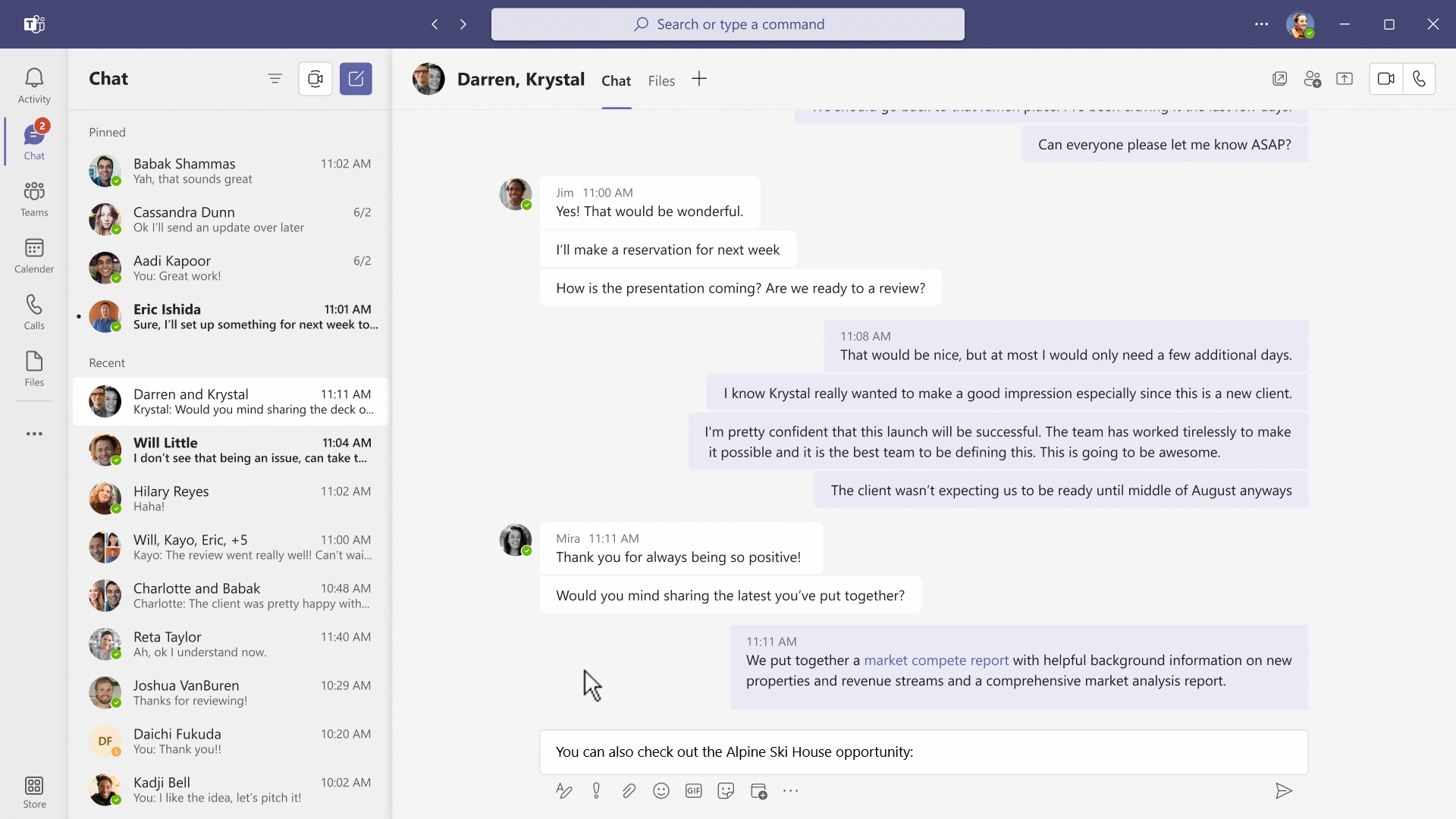
This doesn’t just apply to experiences in Teams—you can start Teams chats or initiate calls right within Dynamics 365, giving you the flexibility to collaborate at the same time with critical information at your fingertips, or asynchronously at your own pace.
Bring essential data and workflows from other apps into Teams
We are excited to see software vendors like SAP, Salesforce, Adobe, Workday, and Atlassian bring their data and app workflows into Microsoft Teams to reach more users directly in the flow of work and deepen the usage of their solutions.
For example, SAP Sales and Service Core in Teams (available today) helps simplify hybrid sales processes, enabling you to keep your focus where it belongs—on customers. In Teams, you can set up meetings from SAP without switching applications. When talking to customers, relevant insights and context can be seen right in Teams. All context, including meeting recordings and notes will get automatically synced back to SAP Sales Cloud in real-time.
This makes a difference for organizations like Eczacıbaşı Building Products in Turkey, which uses SAP Sales Cloud app in Teams to streamline data entry and record keeping. Meanwhile, the company’s sales team can access the latest customer information with one click and update records in real-time—without ever leaving Teams.
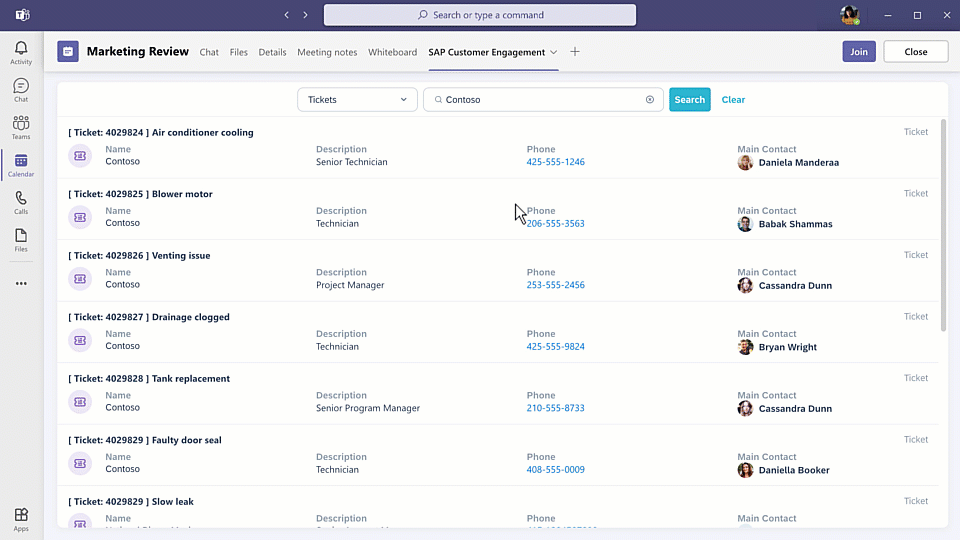
Atlassian’s Jira Cloud is available now and makes project management and issue tracking viewable across common Teams functions like chat, channel tabs, and directly within meetings. Product ideas, feature requests, and tickets can be updated right within Teams thanks to new Jira integrations.
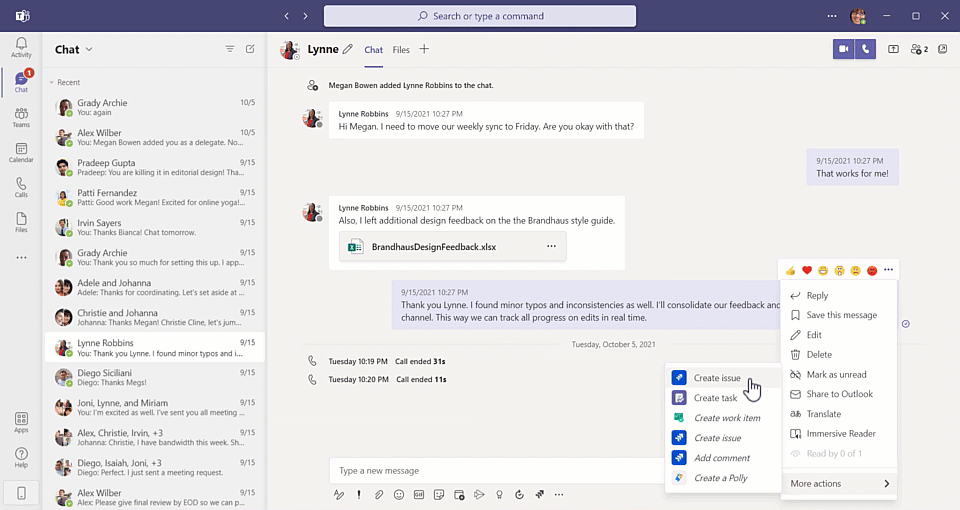
Troops has created a Teams app where enterprise customers can build no-code notification cards with data from customer relationship management (CRM) systems such as Salesforce, Microsoft Dynamics, Outreach, and Gainsight. These custom cards deliver information to chats and channels with customized best next actions right in Teams to optimize data, people, and actions. Troops helps make Teams a system of collaboration for hybrid sales and support.
With Moveworks Teams app, employees can now get instant access to support across multiple languages. Moveworks in Teams supports French, Italian, German, Spanish, Portuguese, and English. Repetitive support tasks are made more elegant through employees being supported in their preferred language, by understanding support issues in their language, and then delivering personalized solutions for the request where they work and collaborate.
Solve problems through custom application development and Power Platform
As more organizations around the world are embracing digital transformation, business leaders are often faced with insufficient resources to build custom solutions and workflows required for hybrid work. That’s why we want to empower everyone to build a line of business applications in Teams with the Teams Toolkit for Visual Studio or low-code or no-code solutions with the Microsoft Power Platform. Today, we are deepening the integrations between Power Platform and Teams to empower you to quickly create a wide range of applications to support the changing needs of your organization.
Application creators will soon be able to embed Teams chat experiences into custom business applications built with Power Apps. In the coming months, this connectivity with Power Apps will allow you to bring the collaboration experience your users use every day into your custom line of business applications.
New features now available for Microsoft Power Virtual Agents allow you to create more robust chatbots that can proactively message users based on pre-set conditions or answers, and support group interactions in channel conversations. Learn more about what you can do with Power Virtual Agents.
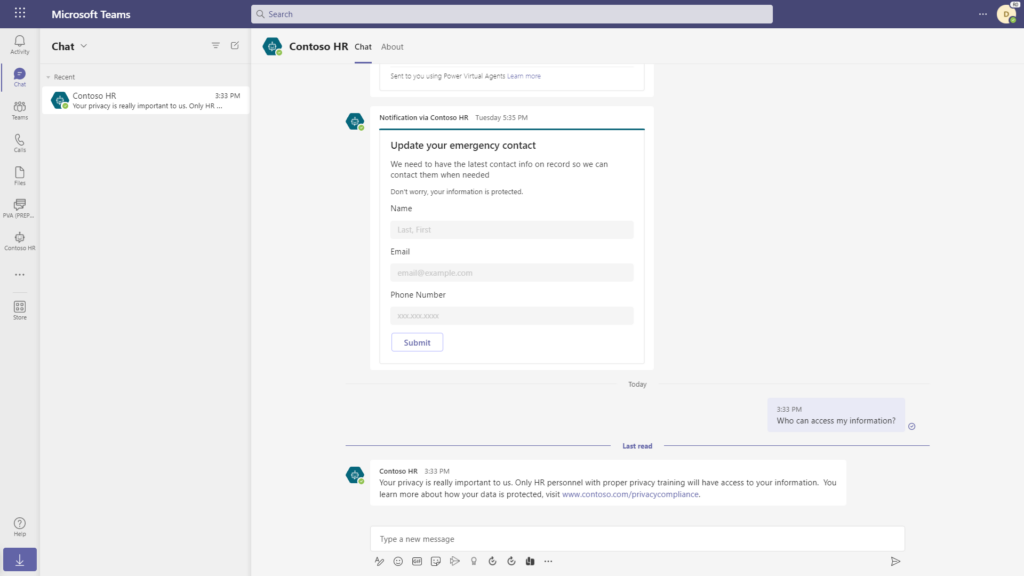
Microsoft Power BI app for Teams is now generally available with more ways to collaborate, featuring new capabilities to help you build a more data-driven workplace. Learn more about the Power BI app.
To facilitate a safe return to work for office-based employees, British retailer Marks and Spencer used Power Apps to create a workplace booking app to help employees reserve desk spaces and ensure social distancing requirements are met. The organization also created a Help Portal application to streamline help desk requests.
“The Help Portal app we developed with Power Apps and embedded in Teams will deliver between half a million and a million pounds in savings based on the reduction in call time alone.”—Andrew Redman, Head of Technology, Colleague Experience and Retail Platforms, Marks and Spencer.
Meanwhile, United Airlines, which is improving core operational processes, bet on Teams to design and implement its Uchat and United Bot to boost communications between its operations team and flight crews. With Teams and their apps, United’s frontline workers can deliver better customer service for United passengers, while improving efficiency and safety.
Bring Teams collaborative features to other applications
We’re also enabling developers to create meaningful experiences in your applications with the integration of communications services like chat and calling. We’ve combined the power of Teams with Microsoft Azure Communication Services (ACS) to help you re-imagine your businesses’ interactions, making it easier to engage with voice, video, chat, and screen sharing on any device. With ACS and Teams interoperability, you can create a custom external web portal, while your employees work in the familiar Teams environment. Teams interoperability with ACS will be generally available on December 1, 2021.
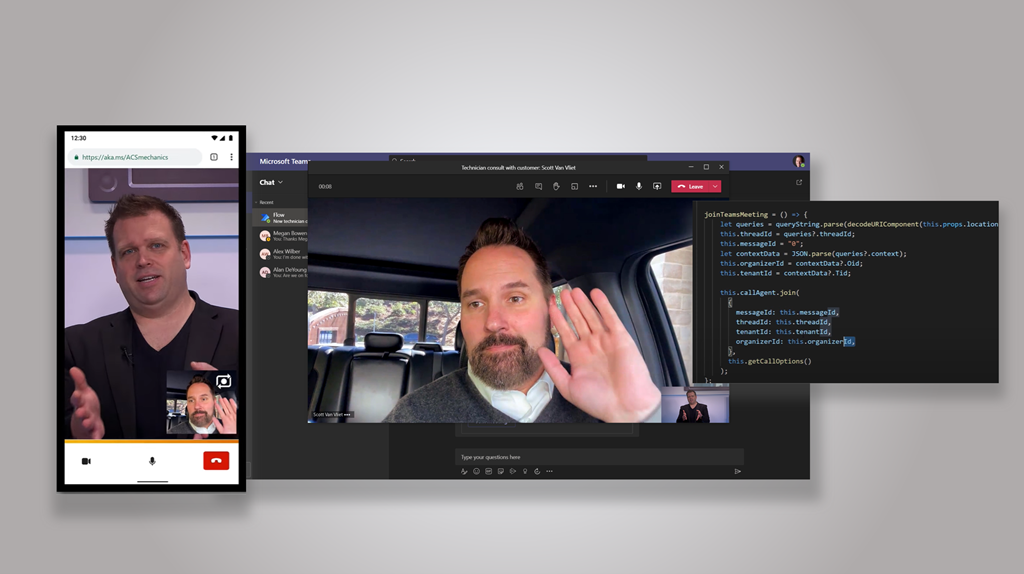
Redesigned Teams App Store
With more than 1,000 apps available today in Teams, we are bringing major improvements to the Teams App Store. Featuring an optimized landing page, the app store will now make customized recommendations and highlight apps based on your preferences.
We’ve updated the app categories, making it easier to find the apps you’re looking for. From both inside and outside your organization, IT admins can now purchase third-party app subscriptions from the Teams admin center through invoice billing to help streamline purchasing. The new Teams Store opens for business later this month.
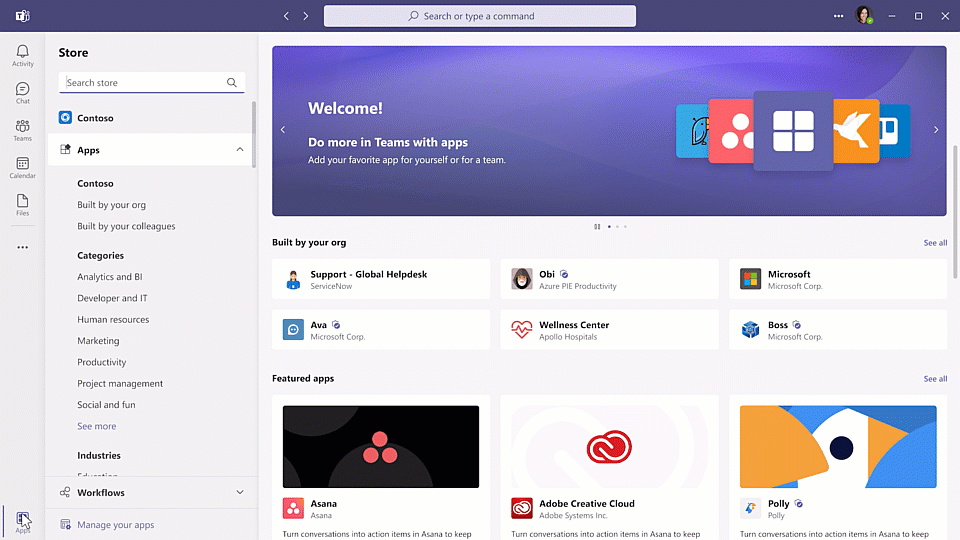
Additional resources
We continue our investment in innovations to help organizations navigate the future of hybrid work, so everyone can connect, collaborate, and stay in the flow of work with full context. With Microsoft Teams, we believe you’ll not just be able to adapt to the new world of work, but you will thrive with it.
Check out these additional resources to learn more about building collaborative apps with Teams:
- Read more about building collaborative apps for hybrid work.
- Visit the Microsoft Teams Developer Center to access docs, blogs, tools, and more to start building Teams apps.
- Visit Microsoft Teams App store.



